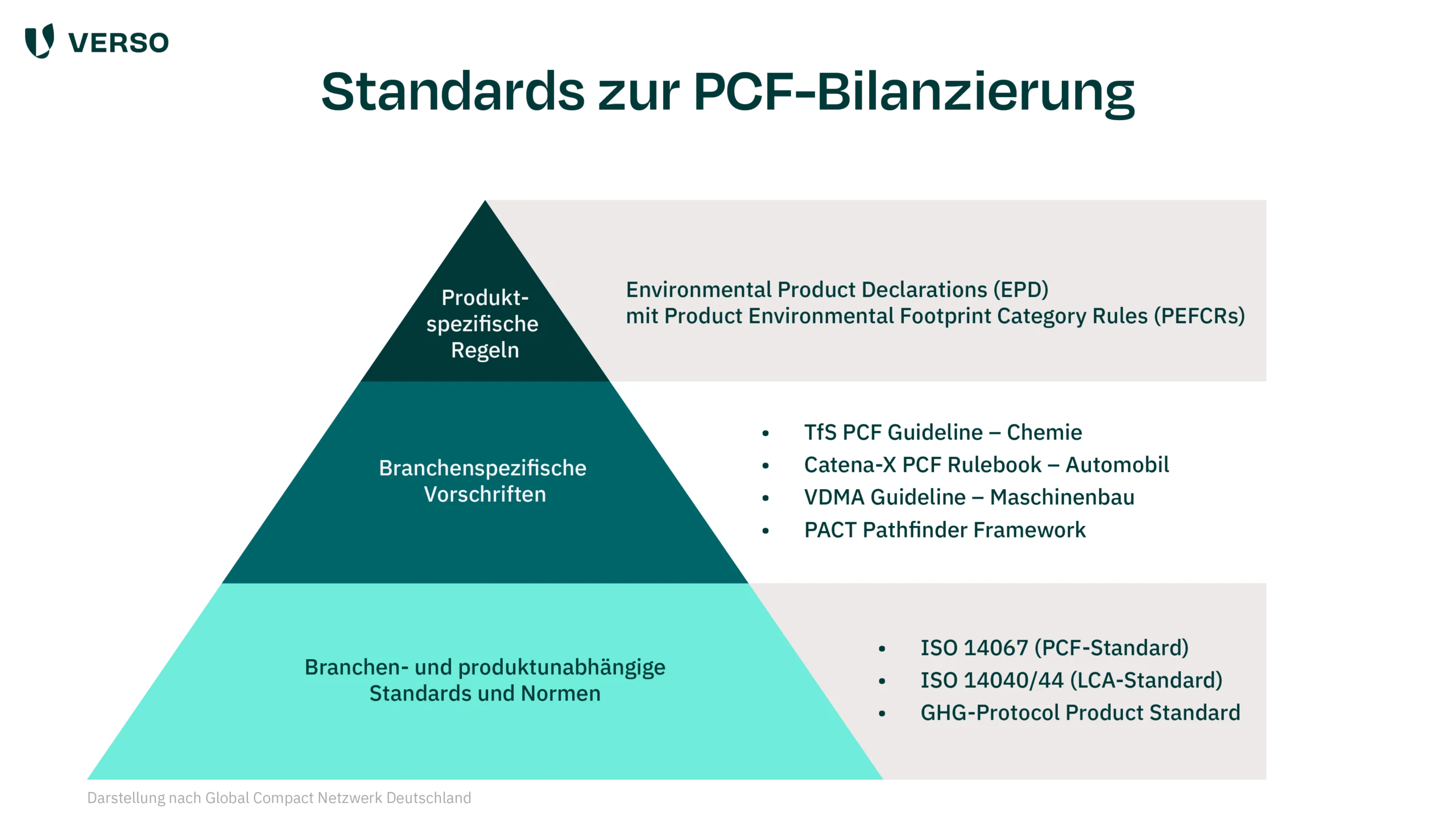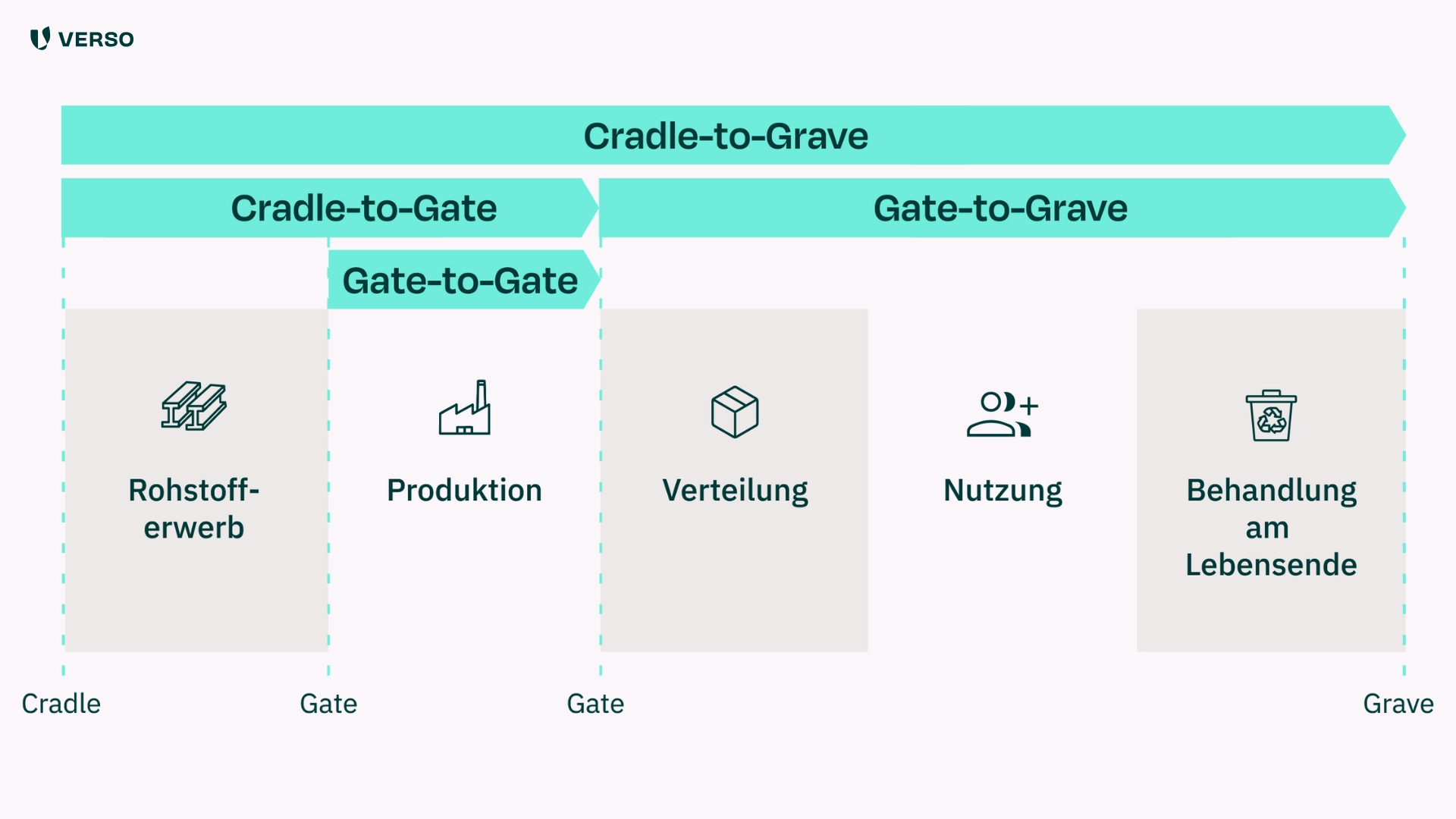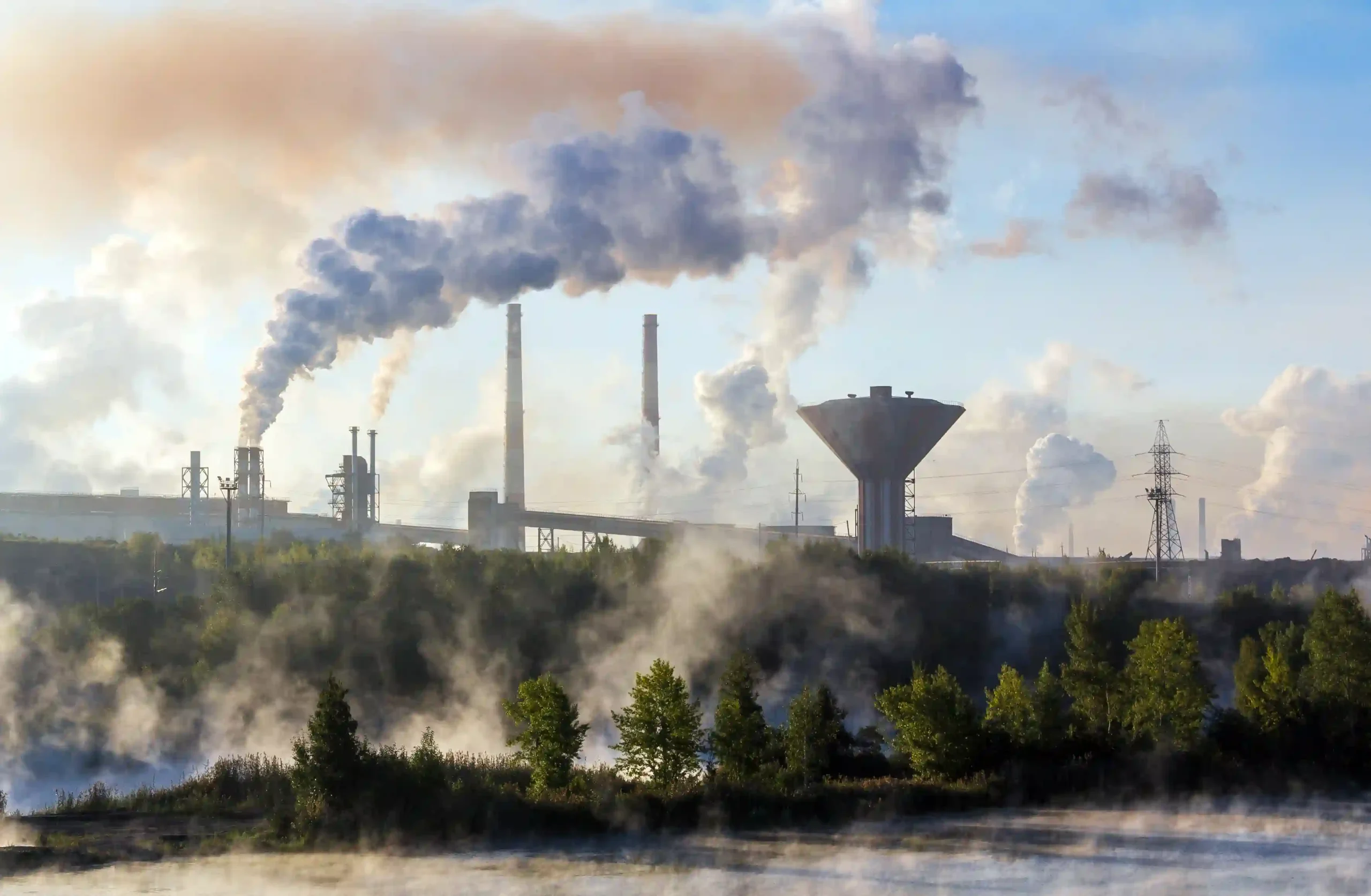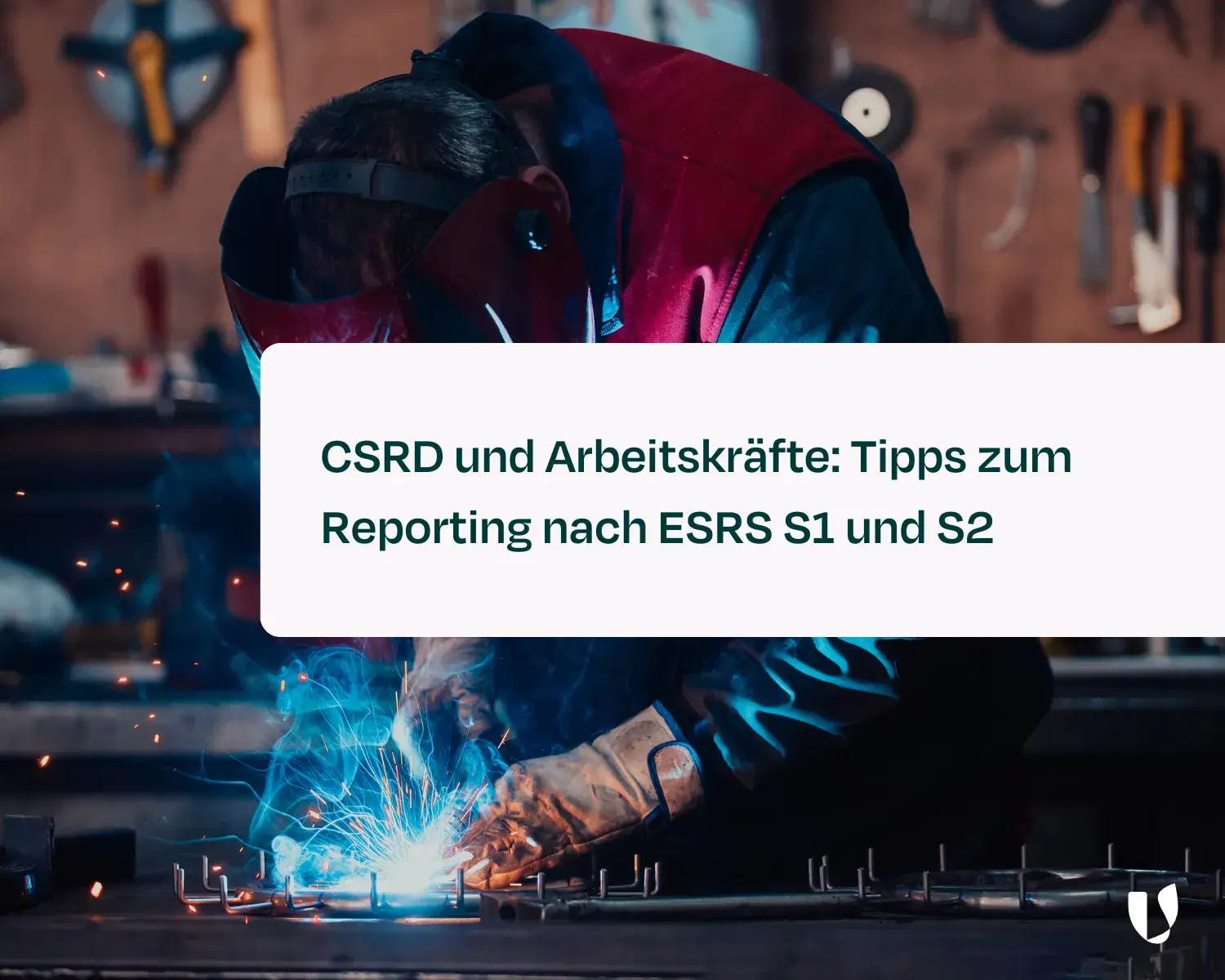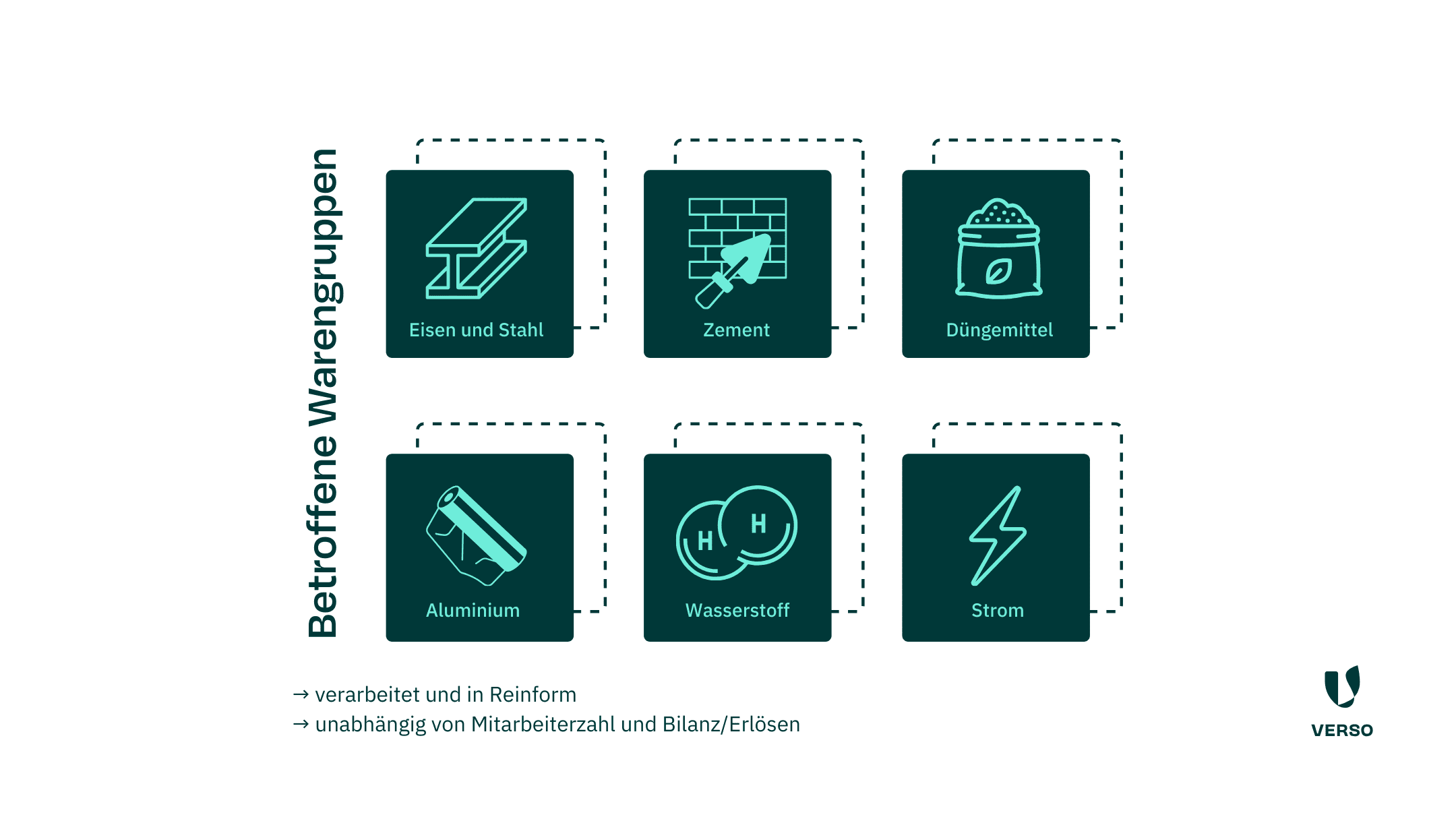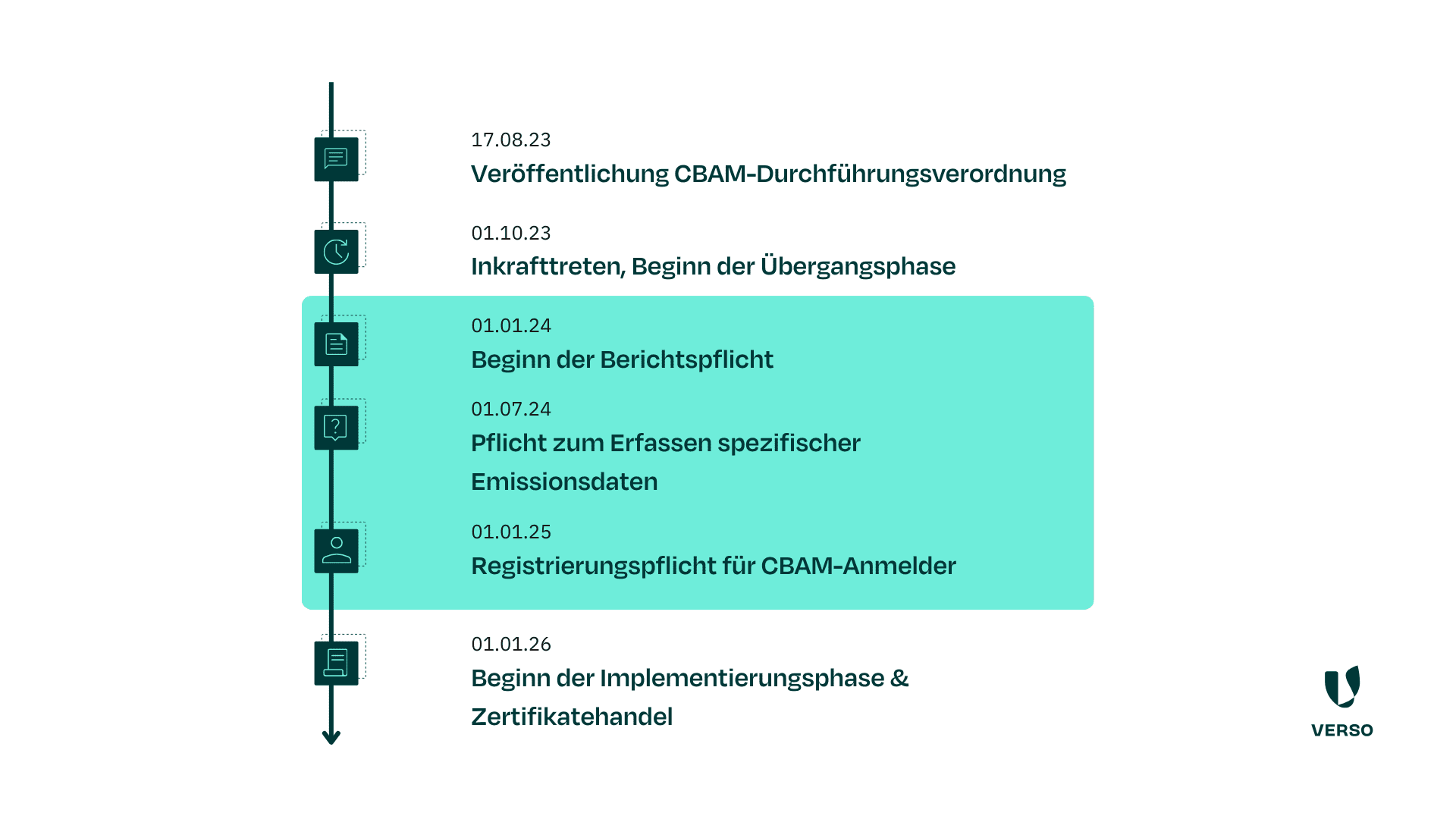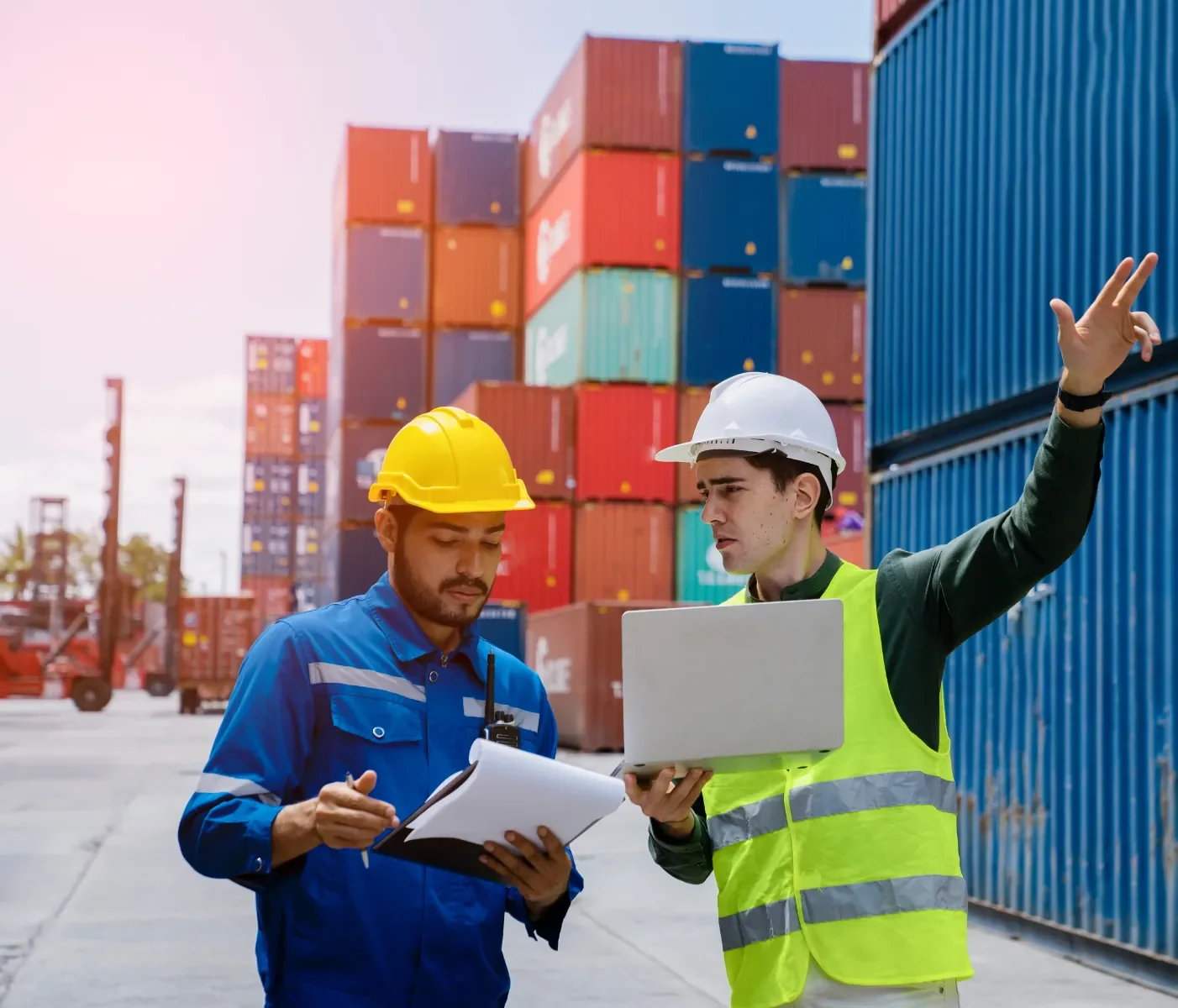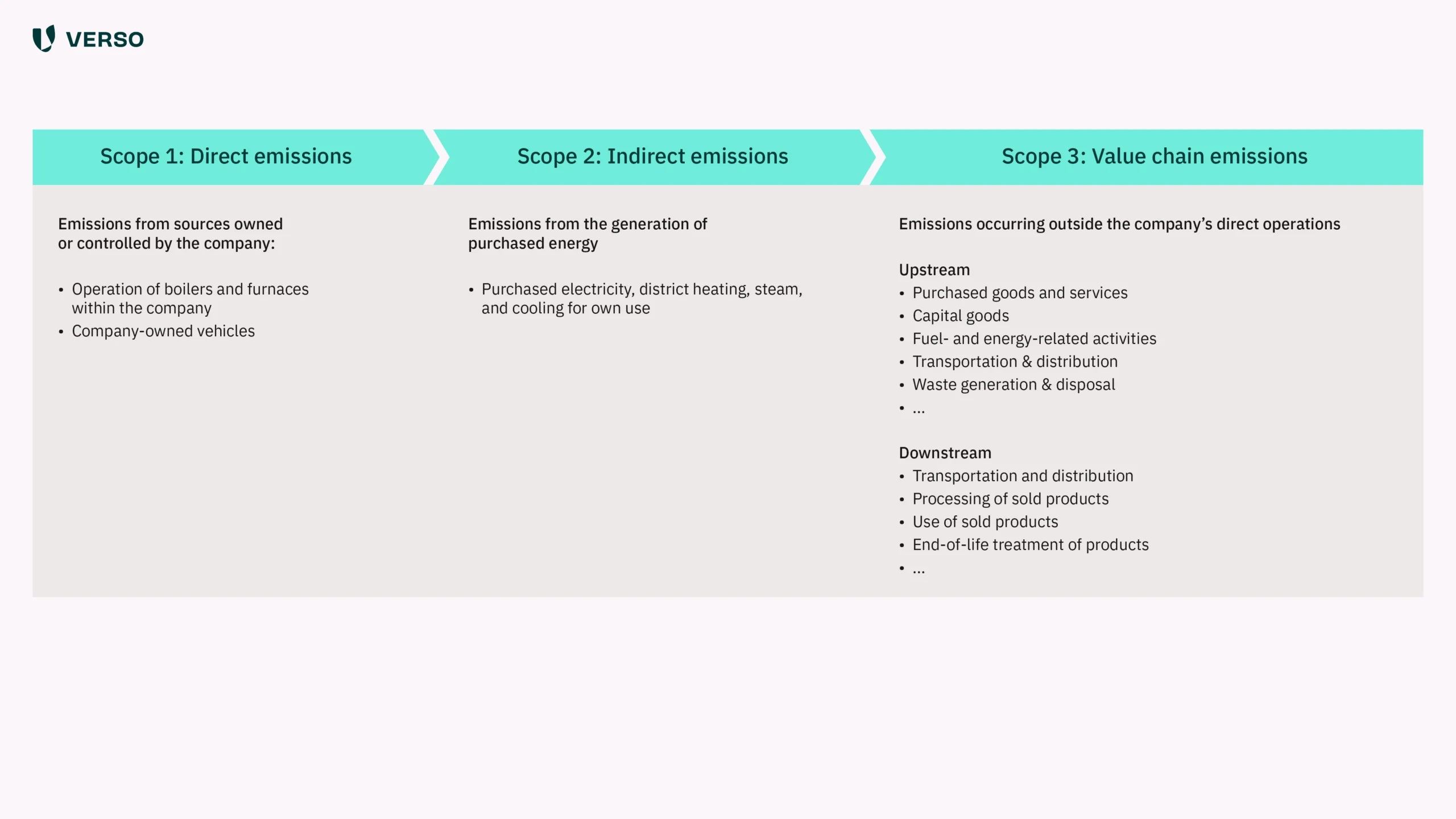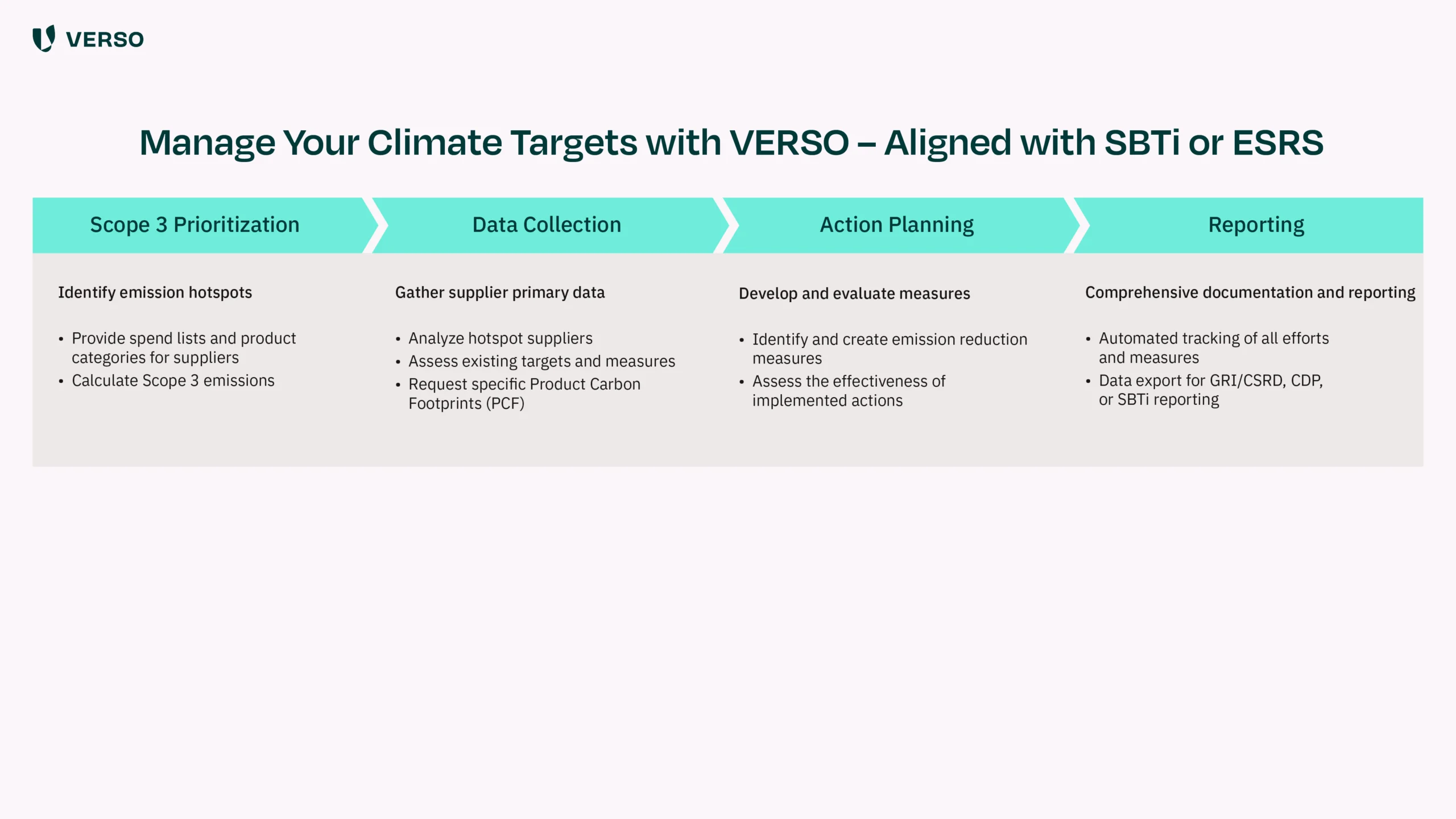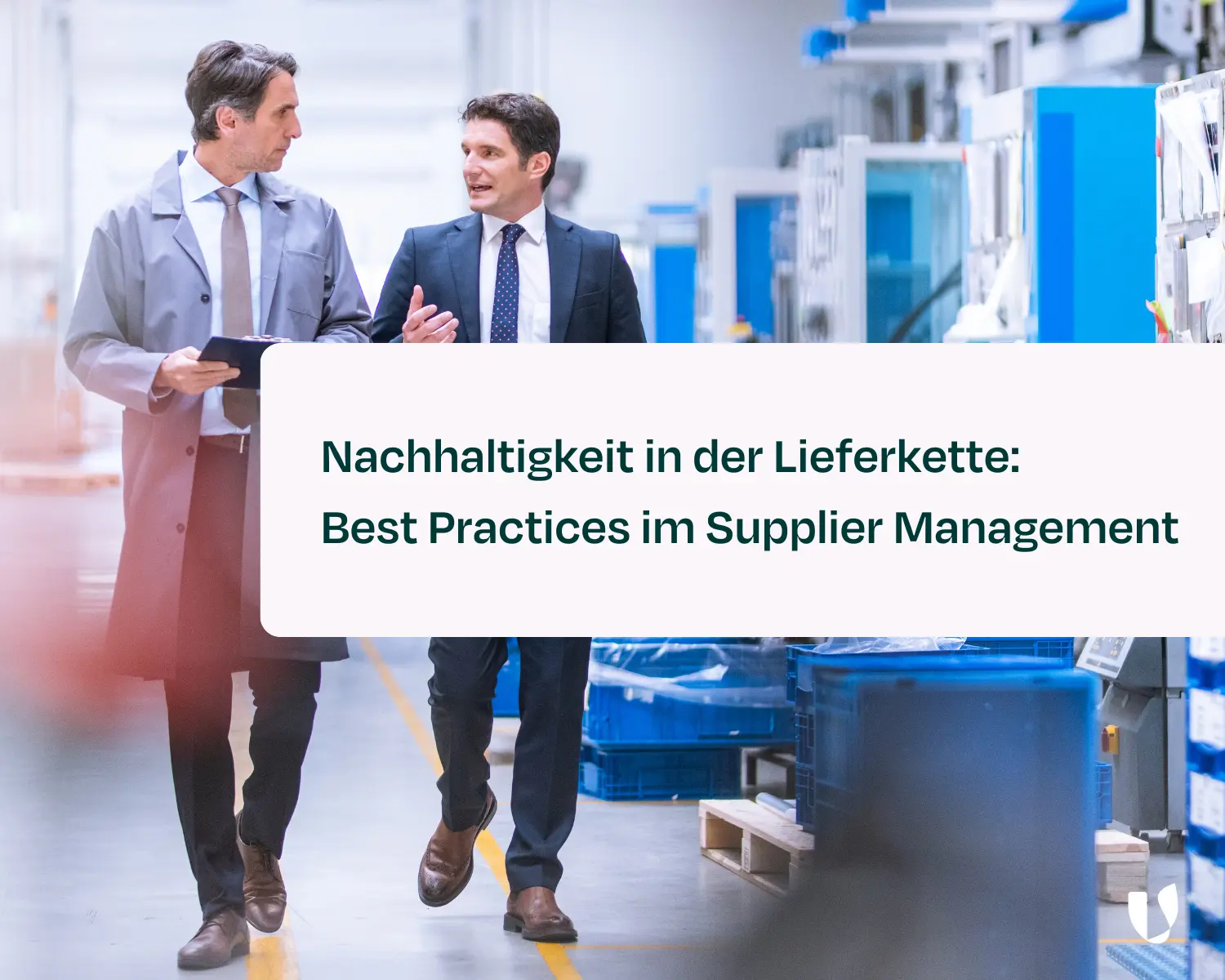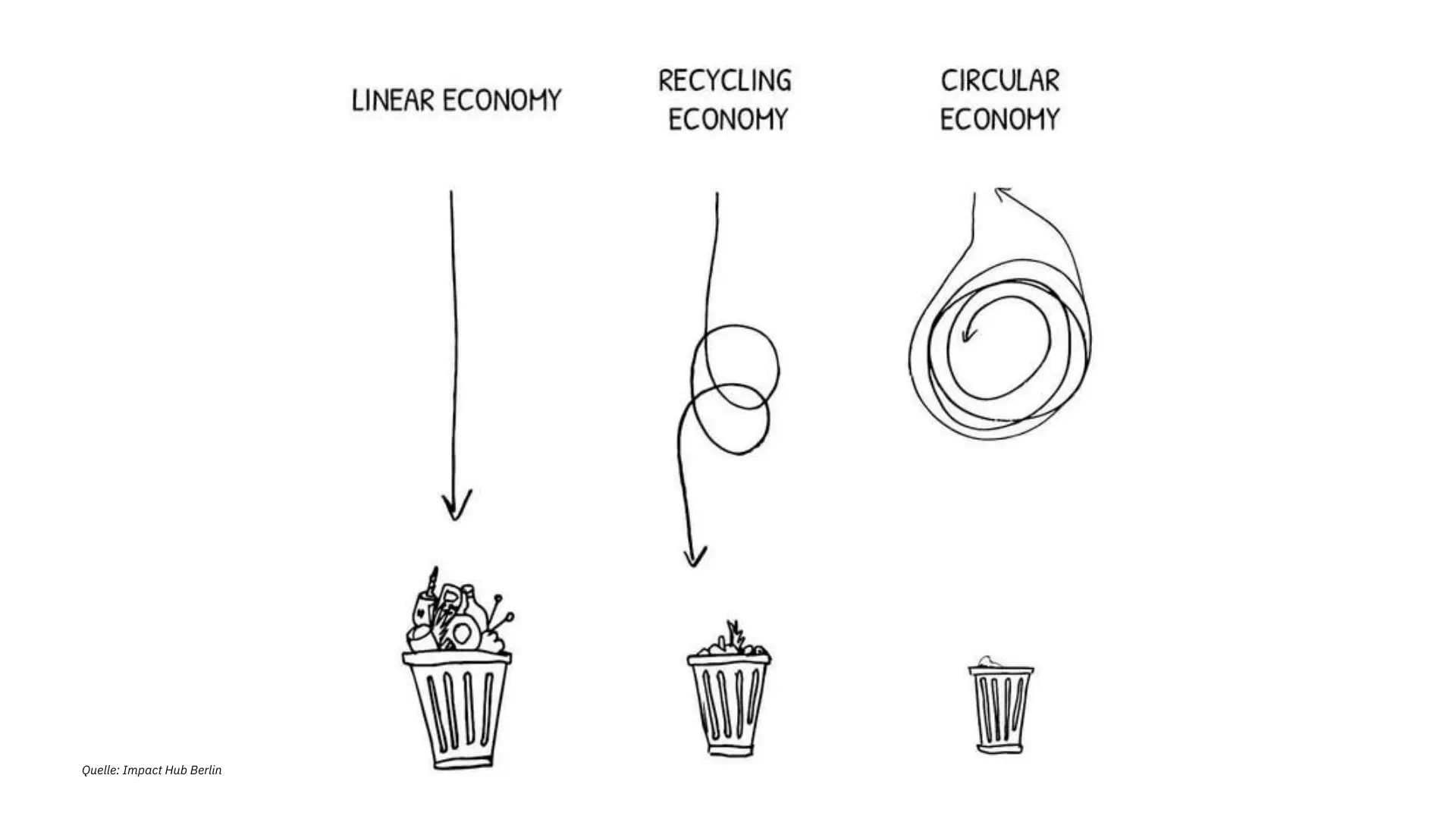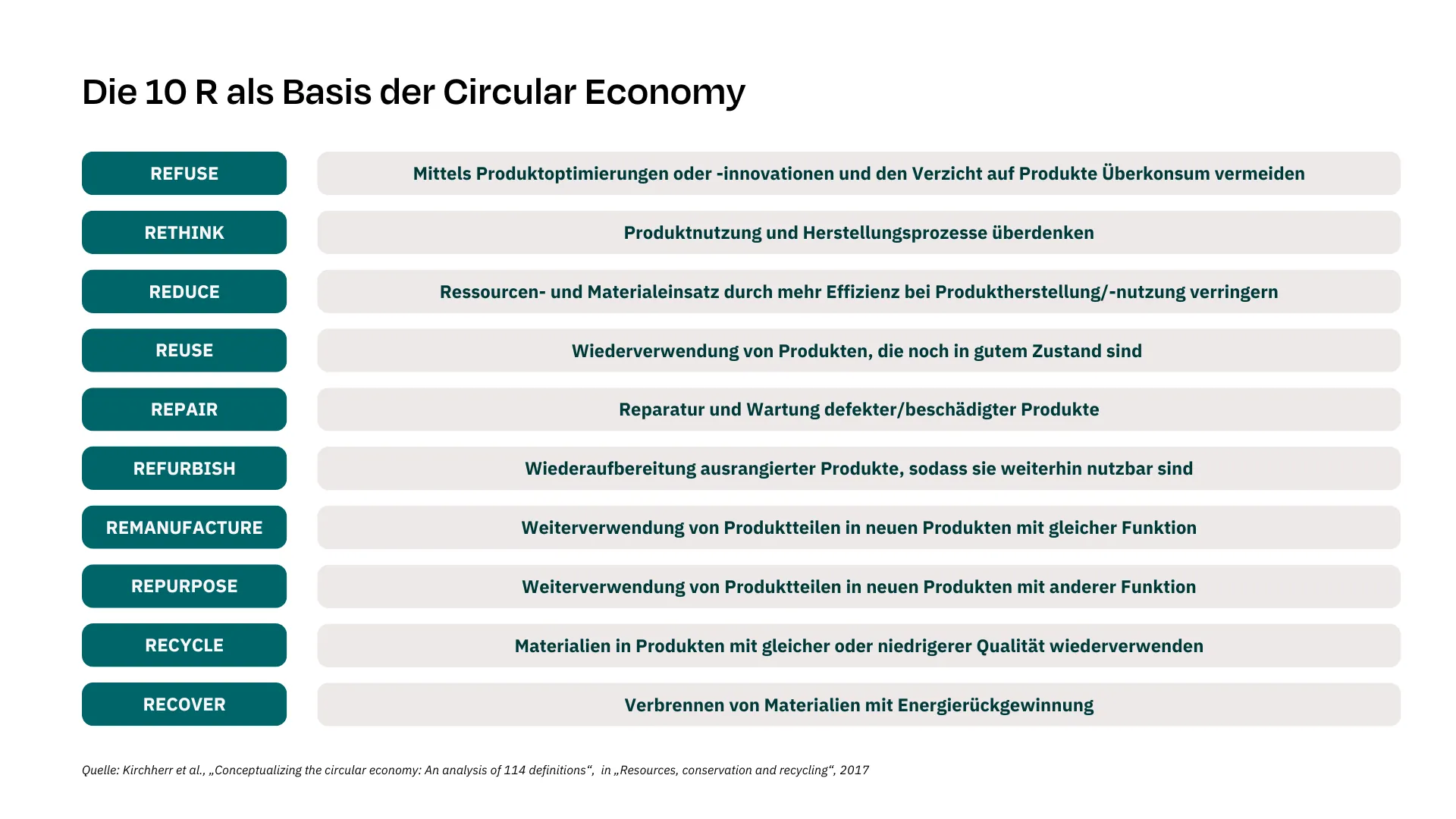
Product Carbon Footprint (PCF) verstehen und berechnen
Wer es ernst meint mit Dekarbonisierung, Produktverantwortung und Zukunftsfähigkeit, kommt am Product Carbon Footprint (PCF) nicht vorbei. Lesen Sie in diesem Beitrag, was der PCF ist, was er bringt, wie Sie ihn berechnen – und warum die CO2-Bilanz von Produkten der zentrale Ausgangspunkt für ein fundiertes Klimamanagement in der Lieferkette ist.
Das Wichtigste zum PCF im Schnellüberblick
- Der Product Carbon Footprint (PCF) beschreibt die gesamten Treibhausgasemissionen eines Produkts über seinen Lebenszyklus – von der Rohstoffgewinnung bis zur Entsorgung.
- Der PCF wird für Unternehmen immer relevanter – unter anderem durch CSRD, CBAM, Green Claims Directive, ESPR und Branchenregulierungen wie die BattVO.
- Ein belastbarer PCF ermöglicht:
- Vergleichbarkeit und Steuerung von Produkten nach Klimawirkung
- Identifikation von Emissions-Hotspots in der Lieferkette
- Fundierte Entscheidungen in Einkauf, Produktentwicklung, Strategie und Kommunikation
Was ist der Product Carbon Footprint (PCF)?
Der Product Carbon Footprint beschreibt die Treibhausgasemissionen (CO₂-Äquivalent-Emissionen), die ein Produkt im Lauf seines Lebenszyklus verursacht.
Der PCF wird auch als CO₂-Bilanz eines Produkts oder produktbezogener CO₂-Fußabdruck bezeichnet. Verschiedene Standards legen die methodischen Anforderungen zur Berechnung fest:
| Unabhängige Standards | Branchenspezifische Vorschriften | Produktspezifische Regeln |
|---|---|---|
| ISO 14067 | TfS PCF Guideline (Chemie) | Environmental Product Declarations (EPD) mit Product Environmental Footprint Category (PEFCR) |
| ISO 14040/44 | Catena-X PCF Rulebook (Automobil) | |
| GHG Protocol Product Standard | VDMA Guideline (Maschinenbau) | |
| PACT Pathfinder Framework |
Berechnen Sie Ihren PCF nach der ISO 14067, richtet sich der Umfang der Berechnung nach der gewählten Systemgrenze:
- Cradle-to-Gate: Von der Rohstoffgewinnung bis zum Werkstor.
- Gate-to-Gate: Nur der eigene Herstellungsprozess.
- Cradle-to-Grave: Über die Nutzung bis zur Entsorgung.
- Gate-to-Grave: Von der Verteilung bis zur Entsorgung.
- Cradle-to-Cradle: In zirkulären Modellen, inklusive Recycling (siehe auch: Wie Circular Economy funktioniert)
Warum ist der PCF für mein Unternehmen wichtig?
Regulatorische Anforderungen
Der PCF ist vielfach wichtig für Compliance und Berichterstattung. Klimadaten Ihrer Produkte werden u.a. hier gefordert:
- CSRD
- CBAM
- Green Claims Directive
- Richtlinie zur Stärkung der Verbraucher für den ökologischen Wandel (EmpCo-Richtlinie)
- Umweltproduktdeklarationen/Umweltproduktdeklarationen (EPDs/BauPVO)
- Digitaler Produktpass/Ökodesign-Verordnung (ESPR)
- Batterieverordnung (BattVO)
- Zukünftig: EU-Strategie für kreislauffähige Textilien
Marktseitige Anforderungen und die eigene Zukunftsfähigkeit
Auch unabhängig von regulatorischen Anforderungen ist der PCF hilfreich für alle Unternehmen, die eine Klimastrategie verfolgen.
- Der Klimawandel bedroht weltweit Lieferketten. Wer durch nachhaltigeres Wirtschaften gegensteuern und Lieferketten dekarbonisieren will, muss jedoch seine Auswirkungen und Hotspots kennen. Emissionsarme Produkte sind risikoärmere Produkte.
- ESG-Daten im Allgemeinen werden zunehmend wichtiger als Vergabekriterium für Finanzierungen und Aufträge.
- Endkund:innen erwarten wahre, glaubwürdige Aussagen zur Nachhaltigkeit von Produkten.
- Der PCF bringt Klimathemen aus dem Abstrakten ins Tagesgeschäft: Mit belastbaren PCF-Daten können Sie die Wertschöpfungskette Ihrer Produkte und den Markt vergleichen, Investitionen priorisieren und Entscheidungen messbar machen.
Der PCF als Steuerungselement
Gerade wenn Ihr Unternehmen erst neu ins Klimamanagement eingestiegen ist, sind Sie vielleicht unsicher, wo die Prioritäten liegen sollen. Möglicherweise haben Sie sogar schon ambitionierte Klimaziele formuliert – aber können noch nicht belastbar sagen, ob und wie Ihr Unternehmen diese Ziele erreichen wird.
Der PCF hilft dabei, genau diese Lücke zu schließen:
- Er liefert nachvollziehbare und transparente Daten.
- Er zeigt konkret, wo in der Produktion und Nutzung eines Produkts Emissionen entstehen.
- Er ermöglicht es, datenbasiert Einkaufsentscheidungen und Produktentwicklungen auszurichten.
- Er schafft eine klare Entscheidungsgrundlage für die Dekarbonisierungsstrategie.
Der PCF als strategischer Hebel
Ein PCF ist damit mehr als ein einzelner Emissionswert. Er schafft Transparenz auf Produktebene – und wird so zum strategischen Hebel in vielen Unternehmensbereichen:
- Produktentwicklung: Der PCF hilft, emissionsintensive Komponenten zu identifizieren und Alternativen zu prüfen. Dadurch können Sie den CO₂-Fußabdruck einzelner Produkte gezielt reduzieren.
- Einkauf: Wer seine Emissions-Hotspots kennt, kann gezielt Einfluss nehmen und die Lieferkette klimafreundlicher gestalten.
- Vertrieb und Marketing: Ein nachvollziehbarer PCF kann die Nachhaltigkeitsleistung des Produkts stärken – vorausgesetzt, die Kommunikation ist ehrlich und fundiert. So lassen sich Green Claims valide untermauern.
- Strategie und Planung: Der PCF zeigt, wo Reduktionspotenziale innerhalb der Komponenten und der Wertschöpfungskette liegen, welche Produkte ökologisch zukunftsfähig sind und wie Sie Portfolios systematisch dekarbonisieren.
PCF, CCF und LCA: Unterschiede und Zusammenhänge
Wenn Sie sich mit dem CO₂-Fußabdruck Ihres Unternehmens und seiner Produkte beschäftigen, stoßen Sie neben PCF immer auch auf die Abkürzungen “CCF” und “LCA”. Alle drei gehören zusammen, unterscheiden sich aber in Details:
| Corporate Carbon Footprint (CCF) | Product Carbon Footprint (PCF) | Life Cycle Assessment (LCA) | |
|---|---|---|---|
| Definition | Gesamte Treibhausgasemissionen eines Unternehmens | Treibhausgasemissionen eines Produkts über den gesamten Lebenszyklus | Ganzheitliche Umweltbilanz eines Produkts über den gesamten Lebenszyklus |
| Systemgrenze | Alle Aktivitäten des Unternehmens (Betrieb, Fuhrpark, Lieferkette etc.) | Der komplette Produktlebenszyklus (Rohstoffe, Produktion, Nutzung, Entsorgung) | Der komplette Produktlebenszyklus inkl. vor- und nachgelagerter Prozesse |
| Zielsetzung | Überblick über Unternehmens-emissionen, Steuerung von Klimazielen und Reduktionsmaßnahmen | Ermittlung der Klimaauswirkungen eines Produkts, Grundlage für Ökodesign und Lieferkettenanforderungen | Analyse und Bewertung sämtlicher Umweltwirkungen eines Produkts (nicht nur CO₂) |
| Relevanz | Grundlage für Klimastrategie, Klimabilanz, CSRD-Bericht, Klimaziele | Relevant für Kundenanforderungen, Produktentwicklung, Ökodesign, Lieferantenbewertungen | Basis für EPDs, Ökobilanzen, Ecodesign-Anforderungen und Umweltkennzeichnungen |
| Datenquellen | Energiedaten, Geschäftsreisen, Fuhrpark, Einkauf, Produktion, Zulieferer, Vertrieb | Material- und Prozessdaten, Lieferantendaten, Nutzungsszenarien, Entsorgungswege | Erweiterte Produkt- und Prozessdaten, inkl. u.a. Wasser-, Energie-, Rohstoff- und Flächenverbrauch |
| Scopes | Scope 1, 2 und 3 gemäß GHG Protocol | Scopes nicht anwendbar; Betrachtung entlang des Produktlebenszyklus | Scopes nicht anwendbar; Betrachtung entlang des Produktlebenszyklus |
| Adressaten | Geschäftsführung, Investoren, Banken, Aufsichtsbehörden, Öffentlichkeit | Kunden, Einkauf, Produktentwicklung, Lieferanten, Endverbraucher | Nachhaltigkeitsmanager, Ökobilanzierer, Umweltverantwortliche, Bau- und Produktzertifizierungen |
Kurz: Der PCF fokussiert sich innerhalb dieser breiteren Analyse ausschließlich auf den Klimaeffekt eines Produkts. Wer Emissionen auf Produktebene erfasst, nutzt vielfach dieselben Methoden, Daten und Systemgrenzen wie bei einer LCA – grenzt die Bewertung aber auf Treibhausgase ein.
Weitere Informationen im Blogbeitrag “Wie berechnet man den CCF?”
In 7 Schritten den PCF berechnen
Mit einem belastbaren PCF schaffen Sie die Grundlage für strategische Steuerung, gezielte Dekarbonisierung, Compliance mit CBAM & Co. sowie glaubwürdige Nachhaltigkeitskommunikation.
Unser Praxisguide zeigt Ihnen Schritt für Schritt, wie Sie starten können – ganz ohne Insellösungen und mit einem klaren Plan.
Laden Sie jetzt unseren kostenfreien Praxisguide „In 7 Schritten zum Product Carbon Footprint“ herunter:
* Bei diesen Informationen handelt es sich um redaktionell zusammengefassten Content, der nicht als Rechtsberatung zu verstehen ist. VERSO übernimmt keine Haftung.
Das könnte Sie auch interessieren:
Abonnieren Sie unseren Newsletter!
Tragen Sie sich ein und erhalten Sie regelmäßig Neuigkeiten zu:
- Aktuellen ESG-Themen und Gesetzesänderungen
- Best Practices aus den Bereichen ESG und nachhaltige Lieferketten
- News zu VERSO
- Sustainability Events uvm.
